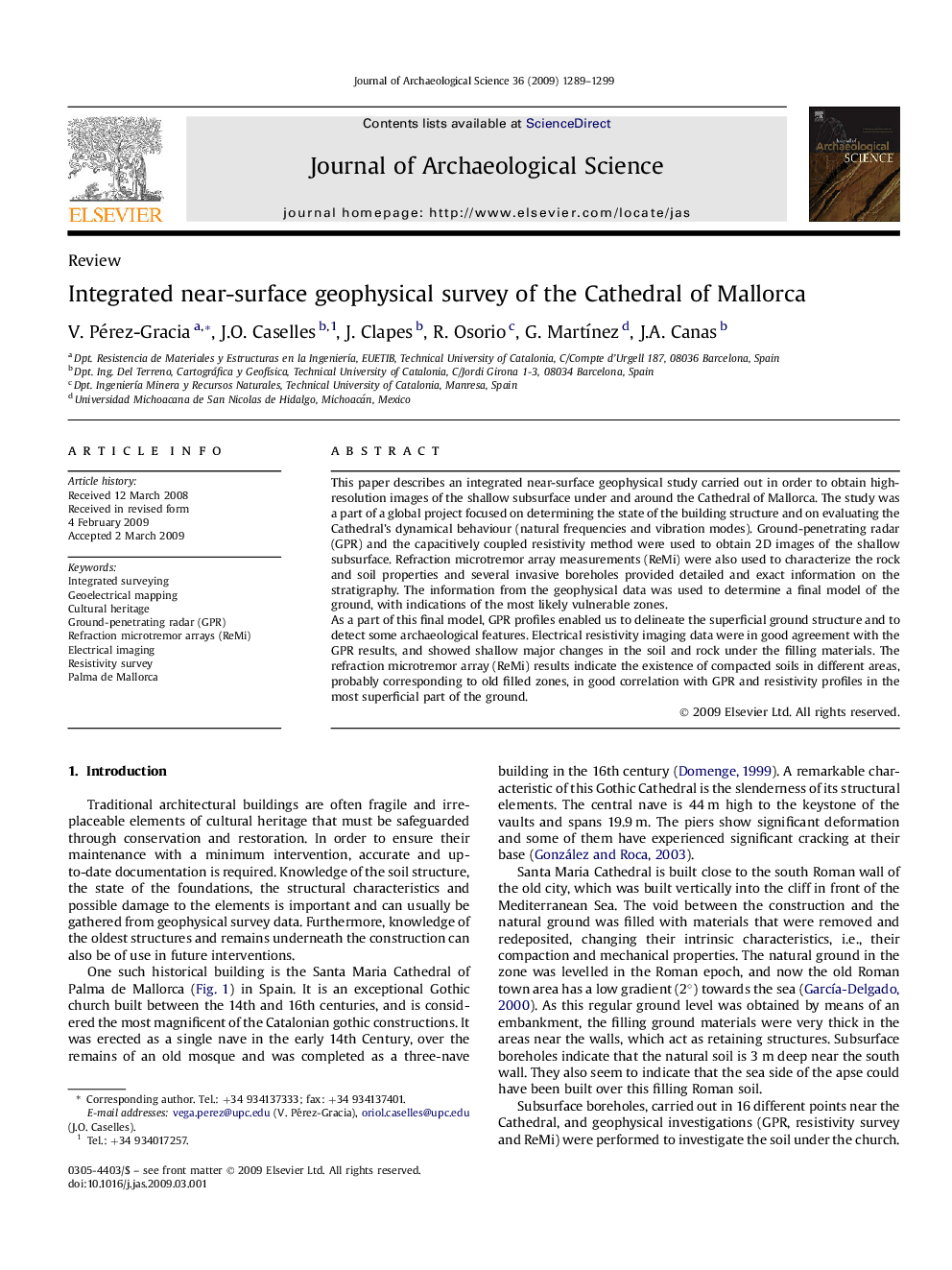| Article ID | Journal | Published Year | Pages | File Type |
|---|---|---|---|---|
| 1037006 | Journal of Archaeological Science | 2009 | 11 Pages |
This paper describes an integrated near-surface geophysical study carried out in order to obtain high-resolution images of the shallow subsurface under and around the Cathedral of Mallorca. The study was a part of a global project focused on determining the state of the building structure and on evaluating the Cathedral's dynamical behaviour (natural frequencies and vibration modes). Ground-penetrating radar (GPR) and the capacitively coupled resistivity method were used to obtain 2D images of the shallow subsurface. Refraction microtremor array measurements (ReMi) were also used to characterize the rock and soil properties and several invasive boreholes provided detailed and exact information on the stratigraphy. The information from the geophysical data was used to determine a final model of the ground, with indications of the most likely vulnerable zones.As a part of this final model, GPR profiles enabled us to delineate the superficial ground structure and to detect some archaeological features. Electrical resistivity imaging data were in good agreement with the GPR results, and showed shallow major changes in the soil and rock under the filling materials. The refraction microtremor array (ReMi) results indicate the existence of compacted soils in different areas, probably corresponding to old filled zones, in good correlation with GPR and resistivity profiles in the most superficial part of the ground.
